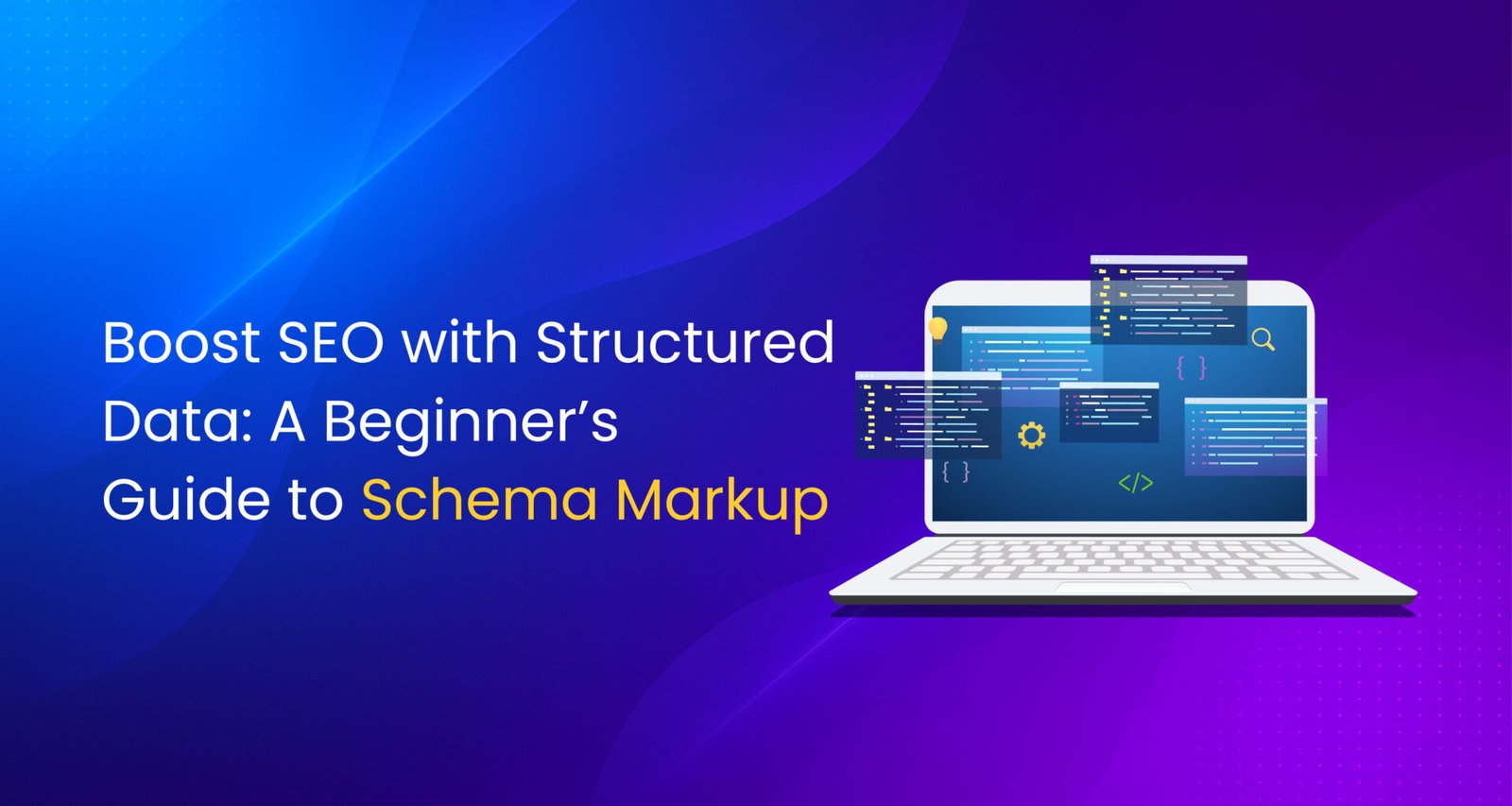What is a Headless CMS and Should You Use One in 2025? In the dynamic digital landscape of 2025, where content needs to be everywhere – from websites and mobile apps to smart devices and beyond – the traditional Content Management System (CMS) is facing a formidable challenger: the Headless CMS. For businesses in Raipur, from budding startups in the Telibandha area to established enterprises in Shankar Nagar, understanding this shift is crucial for future-proofing their digital presence.CMS
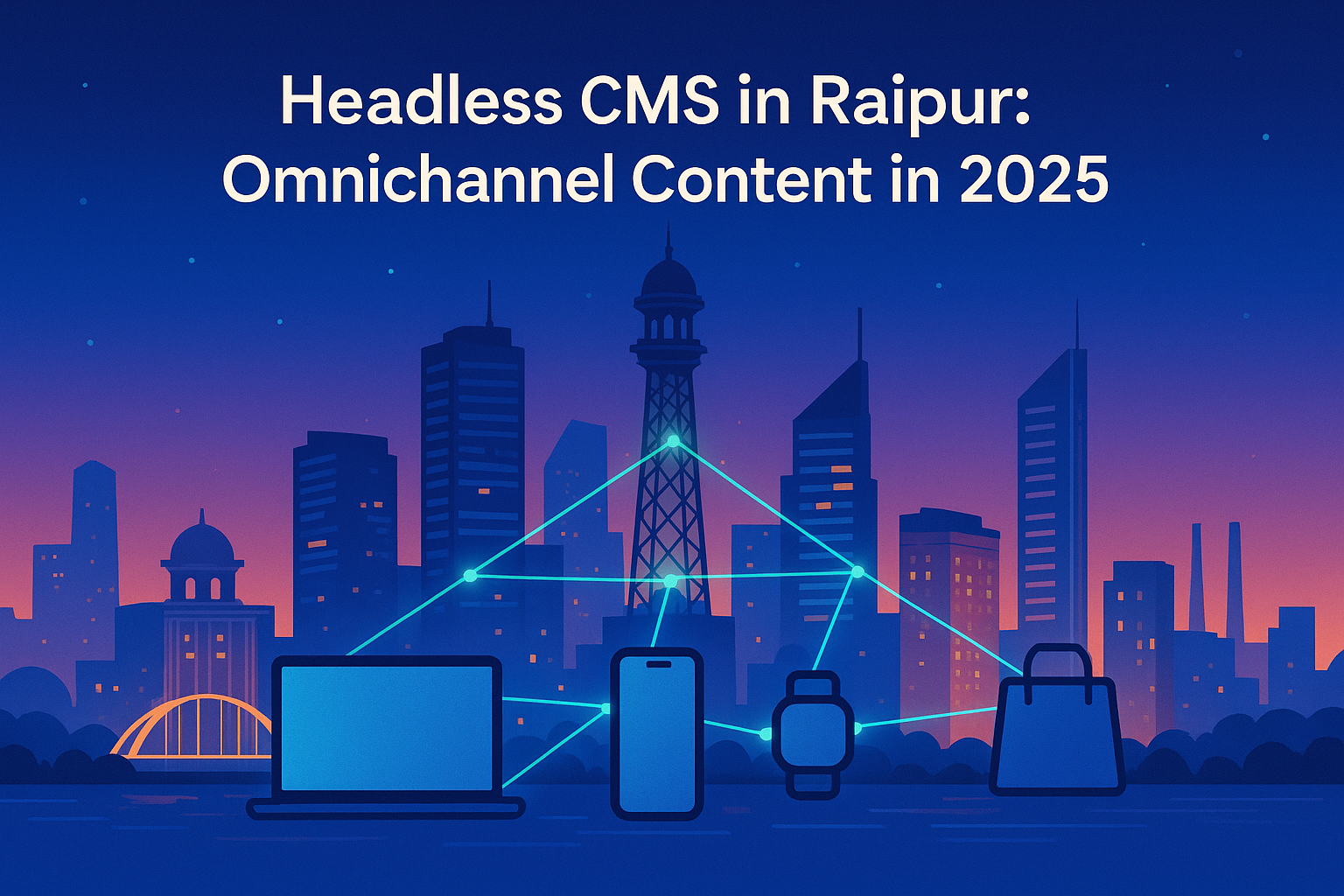
Understanding the Traditional CMS: The Monolith We Knew
Before we dissect the “headless” concept, let’s briefly recap the traditional CMS, like the ubiquitous WordPress you might be using right now. Think of it as a tightly integrated package: the “head” (the frontend, or presentation layer – what your users see) and the “body” (the backend, where you manage content, databases, and logic) are inextricably linked. When you create content in WordPress, it’s designed to be displayed directly on a WordPress website, often relying on themes and plugins to control its appearance. This simplicity has made traditional CMS incredibly popular, particularly for those in Raipur managing straightforward websites or blogs. It’s a “what you see is what you get” (WYSIWYG) editing experience, perfect for content creators who aren’t steeped in code.
The Rise of the Headless CMS: Decoupling for Omnichannel Dominance
Now, imagine detaching the “head” from the “body.” That’s essentially what a Headless CMS does. It’s a backend-only content management system that focuses solely on storing, managing, and delivering content through Application Programming Interfaces (APIs). There’s no predefined frontend or presentation layer. The content is pure, structured data, ready to be consumed by any “head” or frontend application.
Think of it this way: In a traditional setup, your content is dressed in a specific outfit (your website’s theme) from the moment it’s created. With a Headless CMS, your content is raw, adaptable material. It can be a sleek business suit for your website, a comfortable t-shirt for your mobile app, or even a futuristic jumpsuit for an AR/VR experience. The choice of clothing is entirely up to the separate frontend applications, which pull the content via APIs and display it in their own unique ways.
For the growing tech community in Raipur, this decoupling offers unprecedented flexibility. Companies can build highly customized user experiences across a multitude of channels without being constrained by the CMS’s inherent presentation layer. This is particularly vital in 2025, where users expect seamless interactions across diverse touchpoints – from their desktop browsers to their smartwatches and beyond.

Why the “Headless” Trend in 2025?
The shift towards Headless CMS isn’t just a fleeting trend; it’s a response to evolving digital consumption patterns and technological advancements. Here’s why businesses, including those right here in Raipur, are increasingly considering a headless approach in 2025:
- Omnichannel Content Delivery: In today’s multi-device world, content needs to be accessible everywhere. A Headless CMS allows you to write content once and publish it across your website, mobile apps (iOS, Android), smart devices (IoT), digital signage, voice assistants, and even emerging platforms like AR/VR. This provides a consistent brand experience across all customer touchpoints, a significant advantage for any Raipur business aiming for wider reach.
- Developer Freedom and Modern Tech Stacks: Developers gain immense freedom to choose their preferred frontend frameworks and technologies (React, Vue, Angular, Next.js, Gatsby, etc.). This allows them to leverage the latest development tools and build highly performant, scalable, and secure applications. For tech companies in Raipur looking to attract top talent and innovate rapidly, this flexibility is a major draw.
- Enhanced Performance and Speed: Decoupling the frontend from the backend often leads to faster website and application load times. Since the frontend can be built with lightweight frameworks and optimized for performance, it directly contributes to better Core Web Vitals, a crucial ranking factor for Google. For users in Raipur and beyond, a faster experience means better engagement and lower bounce rates.
- Improved Security: By separating the content delivery from the content management, the attack surface is reduced. Your content API can be secured independently, making it harder for malicious actors to compromise your entire system. This enhanced security is a critical concern for any business handling sensitive data or aiming for robust online operations.
- Scalability and Future-Proofing: Headless architectures are inherently more scalable. You can independently scale your frontend and backend resources as needed, handling sudden surges in traffic without impacting overall performance. Moreover, as new technologies emerge, you can simply plug in a new “head” without overhauling your entire content infrastructure, effectively future-proofing your digital presence. This adaptability is key for businesses in a growing city like Raipur.
- Better Collaboration: Content creators can focus on content, and developers can focus on building user experiences. This parallel workflow can significantly speed up content deployment and website updates, fostering better collaboration between marketing and development teams.
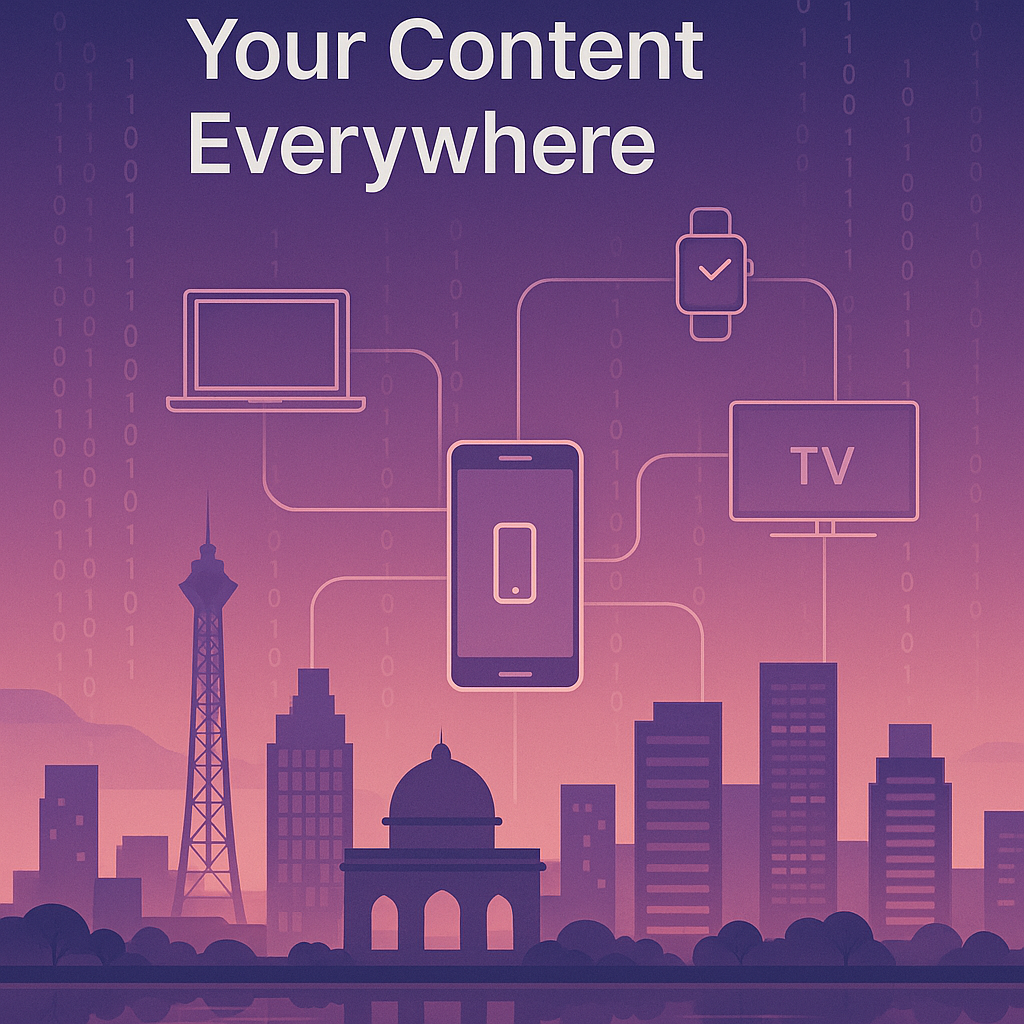
When Should You Use a Headless CMS in 2025?
While the benefits are compelling, a Headless CMS isn’t a one-size-fits-all solution. Here’s when it might be the ideal choice for your Raipur-based business in 2025:
- You need true omnichannel presence: If your content needs to be delivered across a diverse range of platforms beyond just a traditional website, a Headless CMS is almost a necessity. This includes mobile apps, smart devices, interactive kiosks, and more.
- You have a dedicated development team: Implementing and managing a Headless CMS requires more technical expertise than a traditional CMS. Your team should be comfortable working with APIs, modern frontend frameworks, and potentially static site generators.
- Performance and scalability are paramount: For high-traffic websites, e-commerce platforms, or applications where speed and responsiveness are critical for user experience and SEO, a Headless CMS offers a significant advantage.
- You want maximum control over your frontend: If you have specific design and user experience requirements that cannot be met with off-the-shelf themes, a Headless CMS gives you complete creative freedom.
- You’re building complex digital products: For sophisticated web applications, custom platforms, or e-commerce solutions that require seamless integration with other services, a Headless CMS provides the architectural flexibility.
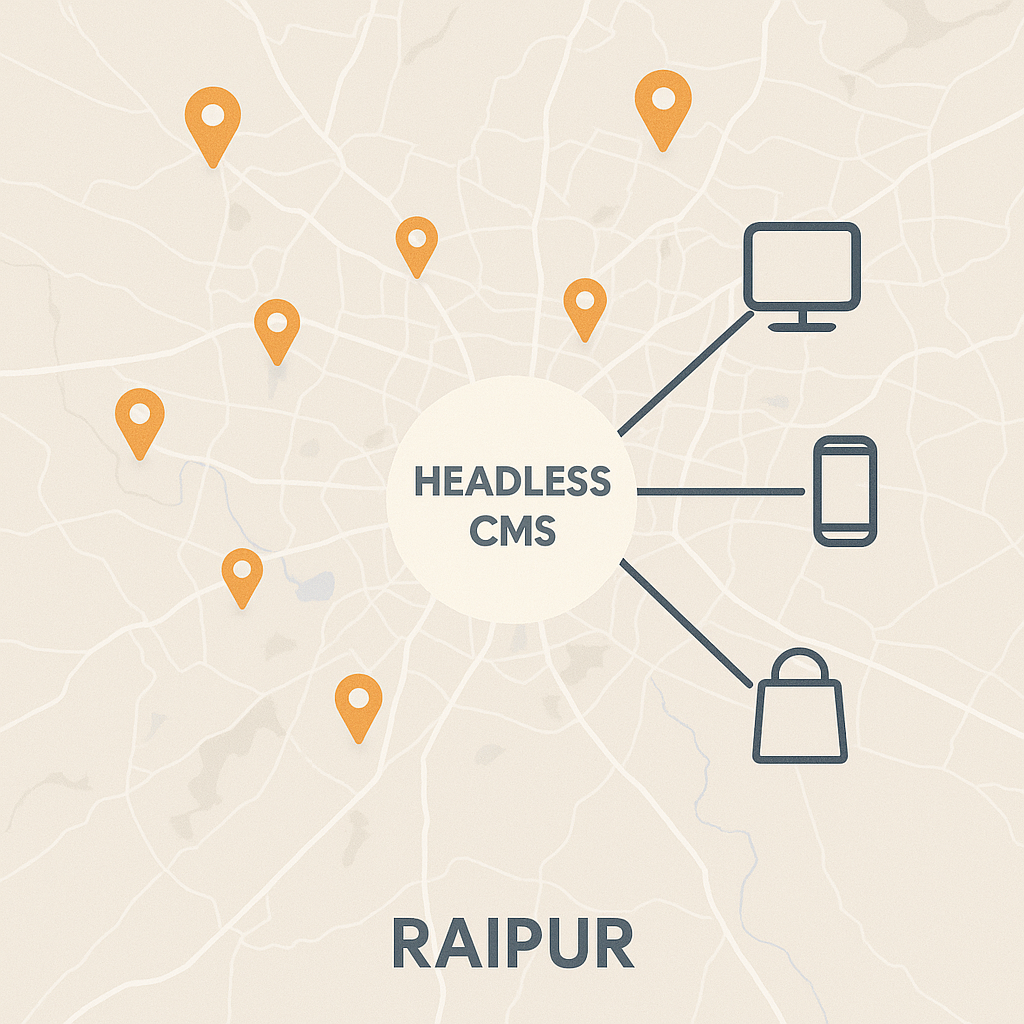
When a Traditional CMS Might Still Be a Better Fit :
Despite the buzz around headless solutions, traditional CMS platforms like WordPress still hold their ground for specific use cases in 2025:
Small businesses with limited technical staff: If you don’t have a dedicated development team or prefer a plug-and-play solution, a traditional CMS is generally more user-friendly.
Simple websites or blogs: If your primary need is a straightforward website or blog with standard content display, a traditional CMS offers an easier and quicker setup with less technical overhead.
Limited budget and resources: The initial development and ongoing maintenance costs for a Headless CMS can be higher due to the need for separate frontend development.
Content creators prefer a visual editing experience: If your content team relies heavily on WYSIWYG editors and needs to see changes reflected immediately in a live preview, the abstract nature of some headless content interfaces might be a hurdle.
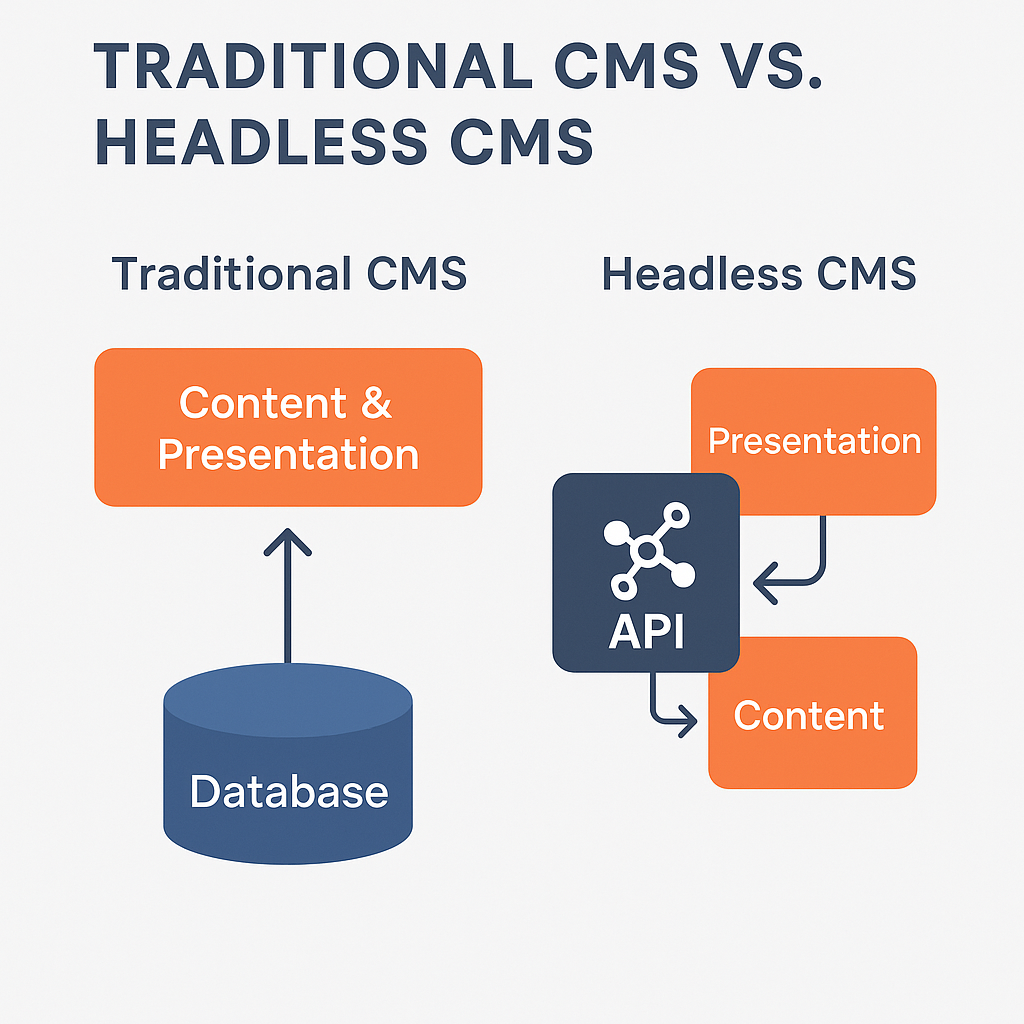
FAQs on Headless CMS and its Relevance for Raipur Businesses in 2025:
Q1: What’s the main difference between a Headless CMS and a Traditional CMS?
A1: A Traditional CMS (like WordPress) combines the backend content management with a predefined frontend presentation. A Headless CMS, conversely, separates these. It only manages content on the backend, delivering it via APIs to any frontend application you choose, offering greater flexibility for omnichannel experiences.
Q2: Is a Headless CMS more difficult to use for content creators in Raipur?
A2: Initially, yes, it can be. Traditional CMS often provides a visual, “what you see is what you get” (WYSIWYG) editing experience. Headless CMS interfaces are typically more abstract, focusing on structured content. However, many modern headless platforms are developing better visual editing and preview features to improve the content creator experience.
Q3: How does a Headless CMS benefit SEO, especially for local businesses in Raipur?
A3: A Headless CMS can significantly boost SEO by enabling faster page load times (a key ranking factor for Google’s Core Web Vitals), allowing for highly optimized frontend architectures, and facilitating easier implementation of advanced SEO techniques like structured data and server-side rendering. For local businesses in Raipur, this means a better chance of ranking higher in local search results due to improved user experience and technical SEO.
Q4: Can I use my existing WordPress content with a Headless CMS?
A4: Yes, in many cases, you can migrate content from a traditional CMS like WordPress to a Headless CMS. This often involves exporting your content and importing it into the new headless system, sometimes with the help of migration tools or custom scripts.
Q5: What are some popular Headless CMS platforms being used globally and potentially in Raipur?
A5: Some widely recognized Headless CMS platforms include Contentful, Strapi, Sanity, Prismic, and Storyblok. The choice often depends on your specific needs, budget, and development team’s expertise. As Raipur’s tech scene grows, adoption of these platforms is likely to increase among local businesses.
Ready to Transform Your Digital Presence in Raipur?
If your business in Raipur is looking to embrace the future of content delivery and leverage the power of a Headless CMS for unparalleled flexibility, performance, and omnichannel reach, we’re here to help. Whether you’re a startup in Shankar Nagar, an established enterprise in Pandri, or a growing brand anywhere in Chhattisgarh, our team of expert developers and digital strategists can guide you through the process.
Contact us today for a consultation and let’s discuss how a tailored Headless CMS solution can elevate your digital presence and help you stand out in the competitive Raipur market. Reach out to us at https://webitof.com/contact/ or visit our office at https://webitof.com/services/. Let’s build something exceptional together, right here in Raipur!


